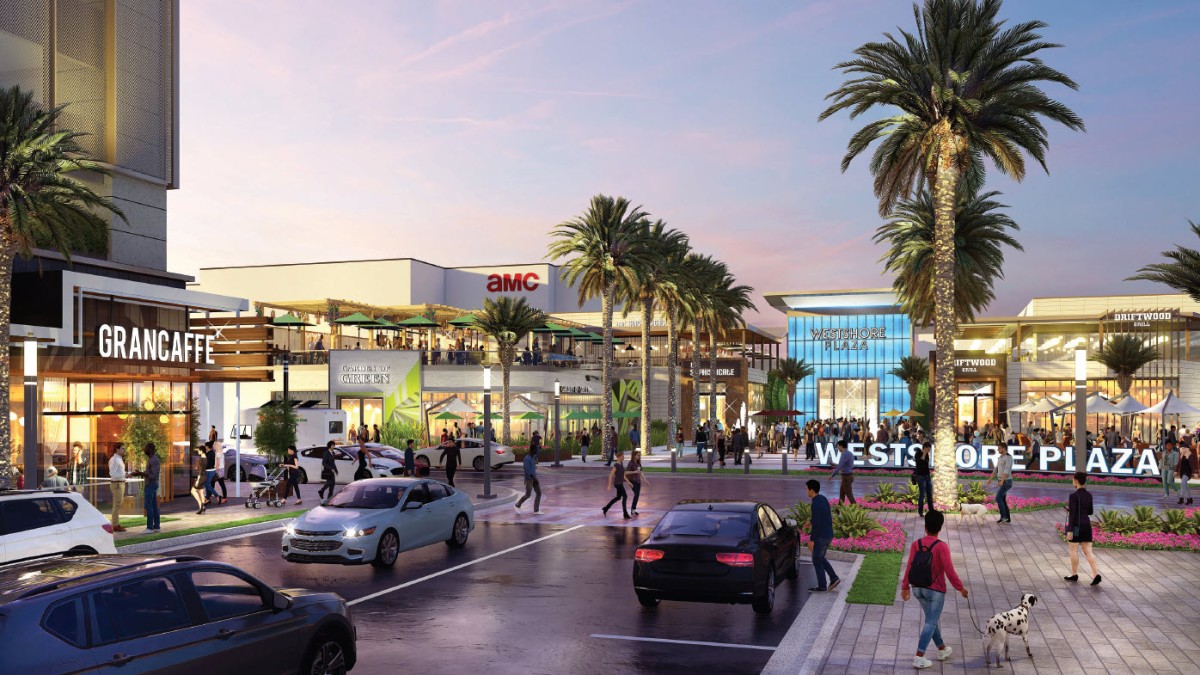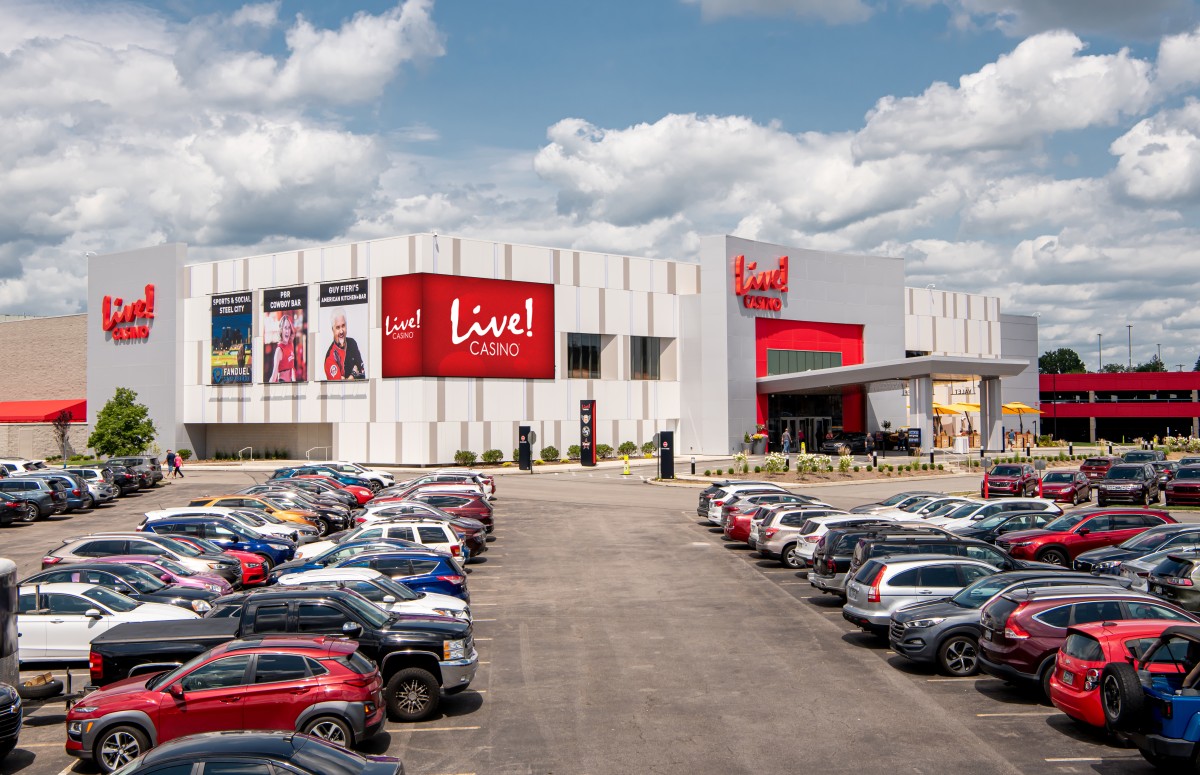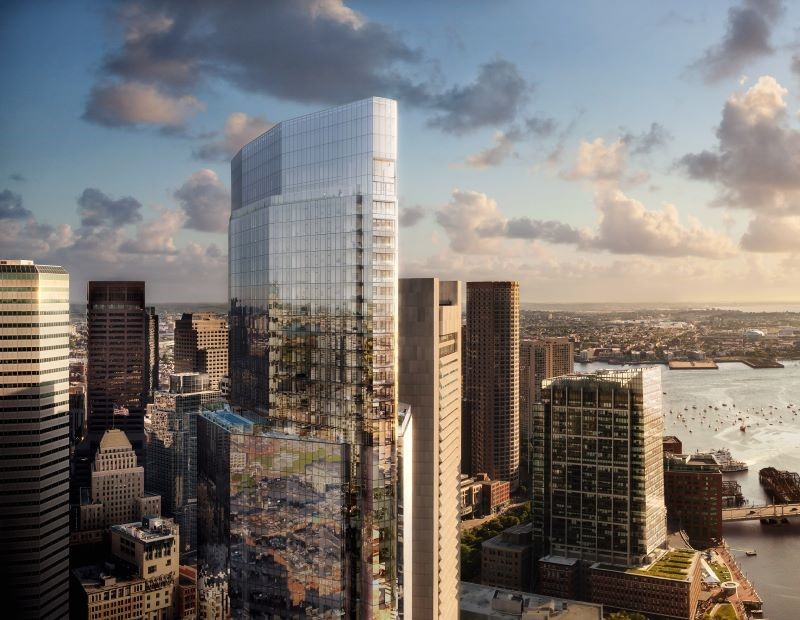Retail Property Redevelopment Strategies
As customer habits quickly evolve, owners must choose strategically from a wide menu of options.
Retail properties are going through a transformation in how they are used by customers, retailers and operators. Keeping up with the constantly evolving nature of the sector is placing pressure on owners to reimagine their space and find the best combination of uses for their properties. Redevelopment options may feature converting indoor malls to open-air, mixed-use centers or adding multifamily components. But selecting from this menu is a complex, high-stakes process that must be carefully tailored to the property.

The makeover of WestShore Plaza in Tampa, Fla., features the redevelopment of a Sears. Image courtesy of wpg
For owners, a major advantage is the unchanging value of in-person shopping and the potential for retail properties to offer varied experiences. “We’ve seen a strong movement towards brick-and-mortar retail in general, and (that is) for both conventional and alternative uses,” said Stephen Lebovitz, CEO of CBL Properties. And as Acadia Realty Trust president & CEO Ken Bernstein told CPE, “Our retailers are making it clear that the store is the most profitable channel for them to execute their business.”
Still, changing consumer shopping habits and the rise of ecommerce may make it advisable to redevelop individual stores or an entire retail property. Construction of new space designed exclusively for retail is in decline. According to a recent report from JLL, more 800,000 square feet of mall space was demolished through the first three quarters of 2022, a trend that makes way for more experiential elements.
While a brick-and-mortar store may be profitable, it may not—by itself—be the most cost-effective use of a property. Developers and operators typically need to explore whether the space should be expanded to include new uses or repurposed altogether. “The reality for well-located [retail] real estate is that it is constantly evolving; the best and highest uses often change over time,” Bernstein added.
Untapped potential
Washington Prime Group, which recently rebranded to wpg, considers redevelopment of enclosed malls on a holistic, case-by-case basis. Often a conventional retail location might not be the ideal use for a given space, despite the strength of the property’s location and underlying real estate. Such a property is “clearly in decline,” observed Christopher Conlon, the firm’s president & CEO. Yet he added that the asset’s buildings and land are still “extremely valuable,” so that a redevelopment of the space involving non-retail uses can help it reach its potential.
Conlon finds that retailers are often open to alternative uses. They include re-activating a vacant department store or repurposing an undeveloped area or parking lot and converting them to a use that that is the best fit for the property’s size, location and wpg’s investment strategy.
For one subset of its portfolio, wpg has a practice of hiring a mixed-use development team to analyze development opportunities, as well as meeting with both consultants and local government representatives. The goal is to determine the most beneficial uses for wpg, its customers and the surrounding community.
Following the rigorous assessment, the redevelopments can include hotels, multifamily, office, medical, fulfillment and data centers, in what Conlon calls a “cobbling together” of potential uses. For retail properties that fall into this category, “[Their] next life is a higher and better use than a mall that became obsolete just through the evolutionary uses of retail,” he said. At WestShore Plaza in Tampa, wpg is planning a 1.5 million-square-foot redevelopment into a lifestyle destination that will add office, residential and hotel components.
Inland Private Capital Corp. undertakes a similar process in its retail redevelopments, finding opportunity in converting big-box stores to self-storage facilities. “Self-storage is really a retail business,” said CEO Keith Lampi. “You still need to appeal to customers in a similar way. You need to have good visibility and good access,” along with strong traffic counts. Even when a big box has been sitting vacant for a while, those qualities can produce success, he noted.
Extensive experience and market familiarity helps Inland identify sites that have the potential to be redeveloped into this property type. The approach that produces success in this area is described by Lampi as “anchored (in) demography, as opposed to economic growth.” Inland Private Capital applies these principles to redevelopment in a way that aims to offer convenience and versatility. Examples range from a former Babies-R-Us, to a series of vacant K-marts and even a local grocery store, Lampi explained.

To revitalize Westmoreland Mall in Greensburg, Pa., CBL Properties brought in the Cordish Cos. to redevelop an empty department store as Live! Casino Pittsburgh. Photo courtesy of CBL Properties
Low-hanging fruit
One elegant solution that offers low-hanging fruit is adding such attractions as dining and entertainment venues in highly visible locations. CBL has observed strong portfolio-wide demand for these tenants and places them near mall entrances for maximum convenience and access. Adding entertainment-based tenants such as Dave & Busters or Main Event allows CBL to “reinvent the malls from traditional retail to more of a multi-use” property, Lebovitz noted.
Distinctive anchors can help the property stand out, too. At Westmoreland Mall, CBL’s 977,000-square-foot property in Greensburg, Pa., the unusual centerpiece of a $150 million department store makeover is a casino. The Cordish Cos. redeveloped a defunct Bon Ton department store as Live! Casino Pittsburgh, a 100,000-square-foot, two-year-old destination offering entertainment and restaurants as well as gaming.
Joe Schlosser, senior vice resident of portfolio management at Philips Edison & Co. (PECO), reports that the operator of grocery-anchored centers is adopting a similar strategy, marked by retailers’ “growing need to get as close as possible to their consumers.”
In PECO’s approach of creating spaces that are both experience-driven spaces and easy to access, Schlosser sees remarkable returns from “medtail” developments, which bring medical services to retail properties. In its third-quarter report, the firm cited the strategy of focusing on grocery-anchored centers by Oak Street Health and Sage Dental. A variety of pet services are also in the mix. UrgentVet and Woof Gang Bakery and Grooming are among the tenants that are rapidly growing their footprints.
Other desirable additions include quick-service and drive-through restaurants—which are seeking neighborhood center locations in larger numbers—and allocating land for outparcel developments. As Shlosser summed it up: “We are exclusively focused on creating great omni-channel, grocery-anchored shopping experiences.”
Perhaps the key takeaway from these strategies is that retail redevelopment is not a one-size-fits-all approach but may call for any number of options. The current economic horizon makes it especially important to be conscious of what the task of redevelopment involves. As Lampi advised: “Make sure you factor in the volatility and build that into your budget.”







You must be logged in to post a comment.